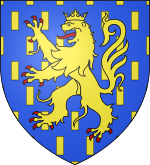Fortifications of Vauban UNESCO World Heritage Sites

The Fortifications of Vauban is a UNESCO World Heritage Site made up of 12 groups of fortified buildings and sites along the borders of France. They were designed by renowned military architect Sébastien Le Prestre de Vauban (1633–1707) during the reign of King Louis XIV. These sites include a variety of fortifications, ranging from citadels, to mountain batteries and sea fortifications, to bastion walls and towers. In addition, the site includes cities built from scratch by Vauban and communication towers. These sites were chosen because they exemplify Vauban's work, bearing witness to the influence of his designs on military and civilian engineering on a global scale from the 17th century to the 20th century.The network of major sites of Vauban is an association of cities created on March 30, 2005 at the initiative of the city of Besançon. It includes the twelve sites which best represent the fortification system erected by Vauban. The application file was selected on January 5, 2007 by the Ministry of Culture to represent France. On July 7, 2008, twelve of the network's fourteen sites were added to the list at the UNESCO annual meeting in Quebec City.
Excerpt from the Wikipedia article Fortifications of Vauban UNESCO World Heritage Sites (License: CC BY-SA 3.0, Authors, Images).Fortifications of Vauban UNESCO World Heritage Sites
Grande Rue, Besançon Sarrail
Geographical coordinates (GPS) Address Nearby Places Show on map
Geographical coordinates (GPS)
| Latitude | Longitude |
|---|---|
| N 47.236111111111 ° | E 6.0269444444444 ° |
Address
Grande Rue
25000 Besançon, Sarrail
Bourgogne-Franche-Comté, France
Open on Google Maps









